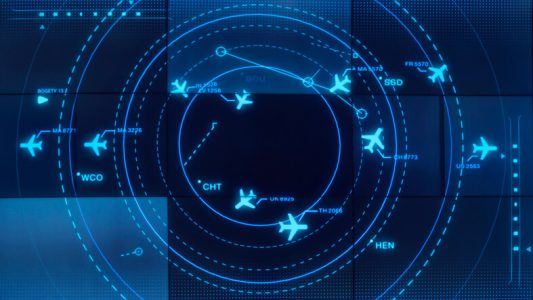The History of TCAS
The original Traffic Alert and Collision Avoidance System (TCAS I) was designed to reduce the risk of mid-air collisions by increasing pilot awareness of nearby aircraft. The system monitors the airspace around an aircraft, looking for other transponder equipped planes that may pose a collision threat. When a threat is detected, it provides the details of the bearing and altitude for the nearby traffic. It also generates an aural warning known as a Traffic Advisory (TA).
TCAS was created to operate independently of both air traffic control and ground-based equipment, giving the flight crew a way to receive advanced warning of an impending collision without help from external sources. The limitation of the original TCAS is that even though the pilot is advised that a threat is out there, it does not give the necessary collision avoidance procedure to follow to mitigate the threat. Without knowing what the other pilot was going to do, the danger of a mid-air collision remained.
TCAS II Advancements
The original TCAS system was a major improvement for air safety, but it didn’t address the action that should be taken by both pilots after they were advised of a potential threat. TCAS II, the next generation of technology, took care of this issue. TCAS II gives the pilot instructions specific to each airplane involved in the conflict. These instructions, called a Resolution Advisory (RA), instruct the pilots to either climb, descend, or adjust their vertical speed.
The best part of TCAS II is that the systems on each airplane can communicate with each other, ensuring a maximum separation between the two aircraft, with one pilot climbing and the other descending, or changing their rate of climb/descent.
Operational Modes
Standby
- Power is applied to the processor and Mode S transponder, but TCAS will not issue any interrogations.
Transponder
- The Mode S transponder is fully operational and will respond to all appropriate interrogations. TCAS remains in standby mode.
Traffic Advisories
- TCAS will operate normally, issue interrogations and perform all tracking functions. RA functions are inhibited.
Automatic (Traffic/Resolution Advisories)
- TCAS will operate normally, issue interrogations and perform all tracking functions AND will issue traffic advisories and resolution advisories, when appropriate.
Alerts
- Traffic Advisory (TA): an alert provided to pilots indicating the presence of another aircraft in the vicinity that may pose a potential collision threat.
- Resolution Advisory (RA): a critical alert that instructs pilots to take immediate action to avoid a potential mid-air collision.
- Clear of Conflict: a notification to pilots indicating that the potential collision threat has been resolved and the aircraft is now safely separated from the conflicting traffic.
Pilot Training Emphasis
- Do not EVER respond in a direction that is opposite from the RA.
- Communicate immediately to the controller, as soon as workload permits.
- Be alert for weakening RA’s so that deviations are minimized.
- If possible, comply with controllers’ lateral instructions, while also responding to the RA.
- When RA is complete, return to assigned altitude or comply with a revised ATC clearance.
The Key to TCAS II Safety
When a TCAS RA alert is issued, the required action must be performed immediately and exactly as ordered. If one aircraft is issued a climb command, then the other aircraft will receive a descend command. If either pilot chooses to disregard the required action, he/she will place both aircraft in danger of a collision, especially because ATC is not involved at this point. The action must be immediate and exactly as commanded. As a reminder, aircraft are not authorized to make any horizontal adjustments based on TCAS warnings. The corrections are to be vertical only.
Be aware that ATC does not have access to the same information that the pilot has. If they clear you to descend, but then you get an RA to climb, it is critical that pilots follow the RA command to climb. Explain your action to ATC as soon as workload permits.
Just remember that TCAS II is only as good as the pilots who are using it. If you get a TA alert, look immediately for the traffic and be ready for immediate action if an RA follows. TCAS II is an excellent safety device when used correctly.
RELATED CTS TRAINING
RELATED CTS TRAINING










